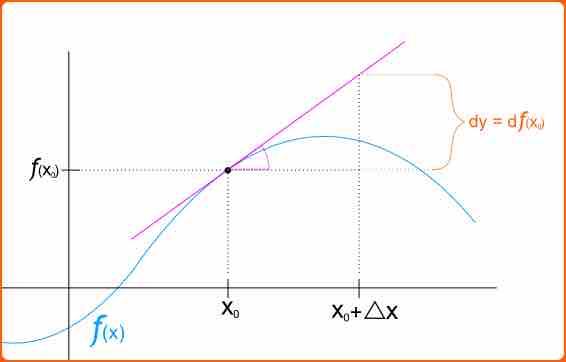In calculus, the differential represents the principal part of the change in a function
where
holds, where the derivative is represented in the Leibniz notation
The precise meaning of the variables

Differentials
The differential of a function
Higher-order differentials of a function
and, in general:
Informally, this justifies Leibniz's notation for higher-order derivatives.
When the independent variable
and so forth.